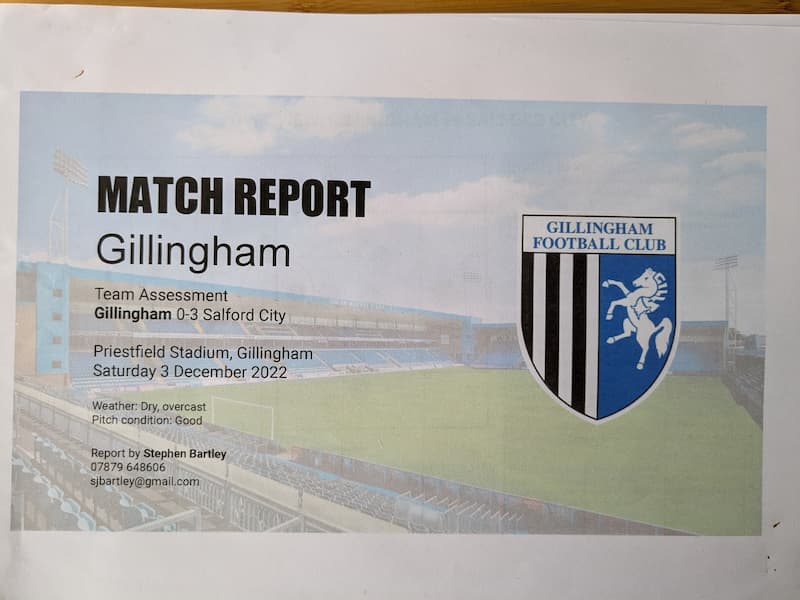Analysing a League 2 opposition report
I was going through some old notes under my desk when I came across a thick envelope. I opened it, and there were three old match reports I’d written, held together with bulldog clips.
These were from several years ago. I would go to matches, usually in League 2, make copious notes (Lesson 1 – more on the lessons later), and then write a match report. It would detail how a team played, their strengths, weaknesses, some player notes. And I’d do this fast, sending it to the clubs set to face that team in the coming weeks. Then I’d wait.
I got zero replies.
That’s not true. One manager sent me an email thanking me for sending it, but no interest in further work. Another club sent a one-sentence letter, on headed paper, saying the same. I still have the letter.
These rejections were devastating. I told myself the reports were not reaching the right people. Or clubs had no vacancies. It never crossed my mind that the reports might not be good enough (Lesson 2).
But finding these reports presented an interesting opportunity.
What if I looked up these games on Wyscout? Then compared what I could see now in the video with what I’d included in the report. I could answer that question once and for all: Were they good reports, or bad?
I have to tell you now that what I discovered was not exactly what I was hoping for. There were some good points, but some bad. Actually, a lot of the bad. There were also some surprises (Lesson 3).
In any case, it provided a chance to consider what I would do differently. And how I’d go about these reports if I was doing them again (Lesson 4).
So if you’re curious how this all went, read on. I’ll also include pictures of the report itself. And some thoughts on the four main lessons I learned on the way.
The game in question was Gillingham vs Salford from several years ago. The result was a dismal 0-3 defeat for the home side, another bad result in a pretty grim season.
So how best to create this little exercise?
You can read the rest of this article, totally free, over on my substack page. I’d love it if you subscribe, but be assured the content will remain free whether you do or not. It’s purely that Substack is an easier platform to use.
It’s there that I outline what went well, what went (very) badly, and what I’d do differently now. There’s also an opportunity (if you like this sort of thing) to see the entire report.
